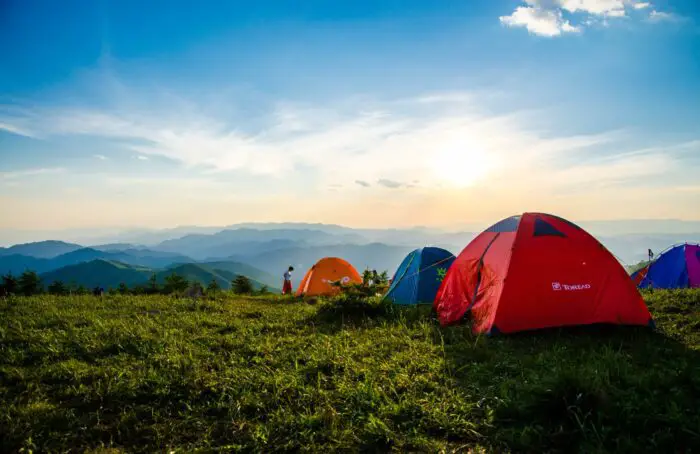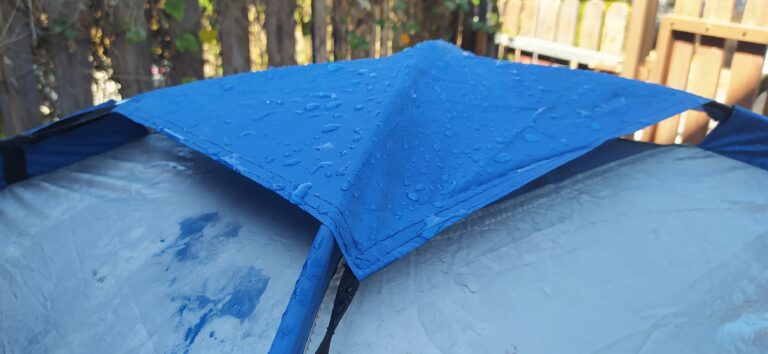Do Tent Shapes Matter? Which Tent Shape Is Best For You?
When you go around in a camping ground, whether it’s in a remote location or a well-known area for camping, you see a lot of tents in different sizes and shapes. This always gets me wondering why some tents are shaped so weirdly. Does the shape of a tent even matter?
The shape of a tent has a major effect on its properties, such as wind resistance, setup time, and pack size. Dome and geodesic tents are more wind-resistant, while tunnel tents are easier to set up and have more interior space. The shape of a tent also affects its weight and pack size, which are important for backpackers.
In this post, we’ll explore the topic of tent shapes, and review what tent shapes exist and what their pros and cons are. We’ll also consider which tent shape is best for you, so you can make an informed decision.
Different tent shapes and their features
While the shape of a tent really impacts its aesthetics, it mostly serves a functional purpose. Different tent shapes have different properties and are ultimately designed to be used in different situations. Here we’ll explore the most common tent shapes, their features, and their downsides.
Dome tent
Dome tents are one of the most common types of tents and are considered versatile and generally good for camping and backpacking.
These tents are typically very space efficient, because they provide a lot of indoor space, compared to the amount of material. Their shapes are very aerodynamic, making the wind blow past them, and making them pretty resistant to wind.
Some of these models feature a single-pole design, while others use multiple poles. Many of them have a vestibule or a porch area, where you can store your gear if you need more space inside the tent.
The main issues with this design are that it’s harder to set up if the ground you’re on isn’t flat enough and that it doesn’t have a lot of headroom as in other designs, so you’ll need to stay low inside the tent.
Tunnel tent
Tunnel tents are less common models than dome tents, but feature a similar design, only longer and more tube-shaped. They’re more common in larger models but are rare if you’re looking for a 2-4 person sleeping capacity.
These tents are typically quick and easy to set up, so you’ll have an easy time when you go out camping. They typically feature a porch or a vestibule, so you can store your gear outside if you need more indoor space.
Some of these tents actually feature attachments, where you can add separate living spaces and add more room. Tunnel tents either feature a single-pole design or use multiple poles.
A tunnel tent is more valuable to wind than other models, mainly because of its long and narrow design. It also doesn’t have a lot of headspace, though a bit more than the dome design.
Geodesic tent
Geodesic tents are very rare among backpackers but are more common with campers and glampers. You’re likely to sleep in one if you rent a tent that’s already set up somewhere.
The tents feature complex shapes with interesting pole structures, making them extremely wind and weather-resistant. They’re especially useful for people camping in difficult weather and at high altitudes.
Some of these tents feature a porch or a vestibule area, so you can store your gear outside if you need more indoor space. They’re generally considered efficient with floor and head space because of their design.
The main downside of geodesic tents is their weight since because of the complex pole structure they’re typically much heavier than other models. The complex design also makes them a bit harder to set up.
Pyramid tent
Pyramid tents are very similar in look to traditional tents, and feature a pyramid shape. They’re most common with ultralight backpackers, because they design can be very weight efficient.
These models usually feature a single-pole design and are typically really quick and easy to set up. Some can even be set up with a trekking pole instead of the tent pole, so you can reduce the amount of weight you carry. Some of them have an opening at the top that can be opened for ventilation.
Usually, these tents don’t offer a lot of headroom and are less wind-resistant than the alternatives.
The information about the different tent shapes, their pros and cons, and their features, is also presented in the table below:
| Tent Shape | Pros | Cons | Features | Best For |
|---|---|---|---|---|
| Dome | Efficient use of space, Good wind resistance | It can be difficult to find a flat spot to set up on, May not have as much headroom as other shapes | Single-pole or multi-pole design, Can have a vestibule or porch area for gear storage | Backpacking, Exposed or windy locations |
| Tunnel | Can be quick and easy to set up, May have a porch or vestibule for gear storage | Can be more susceptible to wind damage due to their long, narrow shape, May not have as much headroom or interior space as other shapes | Single-pole or multi-pole design, Can have an attachment for adding on separate living space or vestibule | Groups needing a larger tent with multiple rooms |
| Geodesic | Extremely wind-resistant due to their sturdy, multi-pole design | May be heavier and more difficult to set up than other shapes, May not be as efficient in their use of space as other shapes | Multiple intersecting poles create a sturdy structure, Can have a lot of headroom and interior space, and can have a porch or vestibule for gear storage | Exposed or windy locations, Backpackers needing a sturdy, wind-resistant tent |
| Pyramid (tipi) | Can be quick and easy to set up | May not be as wind-resistant as other shapes, May not be as efficient in their use of space as other shapes | Single-pole design, Can have an opening at the top for ventilation | Groups needing a large, spacious tent |
Choosing the right tent shape for you
To determine which tent shape will be the best for you, you’ll need to consider what’s the main way you’re going to use the tent. The different tents have different properties, pros and cons, and features, so they’re best suited for different purposes.
The first thing you should consider is what’s the main type of trip you’re going to go to. If you’re usually using your tent for camping, you might want a bigger tent, so it fits all your gear and equipment, and so you’re comfortable. A dome, tunnel, or pyramid tent should be fine. If you’re mainly using it for backpacking, you’ll want to get a lighter option, even if you give up space, so do for a dome tent.
The duration and frequency of the trips matter as well. If you’re only camping occasionally and for one or two nights, you can go for a less specious model than you would if you camp a lot and for longer durations. Longer trips usually require more gear, because you want to feel comfortable if you’re camping for a while. For longer trips, go for a tunnel or pyramid tent.
The number of people you typically camp with has a lot to do with the size of the tent you’ll need. The advertised sleeping capacity of tents is typically the absolute limit. You can read about what size tent you might need in an article I previously wrote, where I analyze the numbers. If you’re a part of a big party, go for one of the bigger options for tent shapes.
The last thing to consider is the weather conditions you usually camp in. If you might find yourself in a really windy location, for example, if you’re backpacking and camping in mountainous areas, or if you camp in winter even when it’s raining, you might want to get one of the more wind-resistant models. In that case, you might want to bring a heavier option that’ll last the weather, and go for a Geodesic tent.
Conclusion
In the post, we considered the different common tent shapes, their pros and cons, and how to choose the right tent for you, based on its shape. Different tent shapes affect a lot of the tent properties, so consider how you’re going to use the tent before making a choice.
Make sure to think about your own needs when selecting your tent, and keep your preferences in mind. There’s no “one rule fits all”.
So next time you’re in the market for a tent, consider its shape, so you can have a great time on your next adventure.







